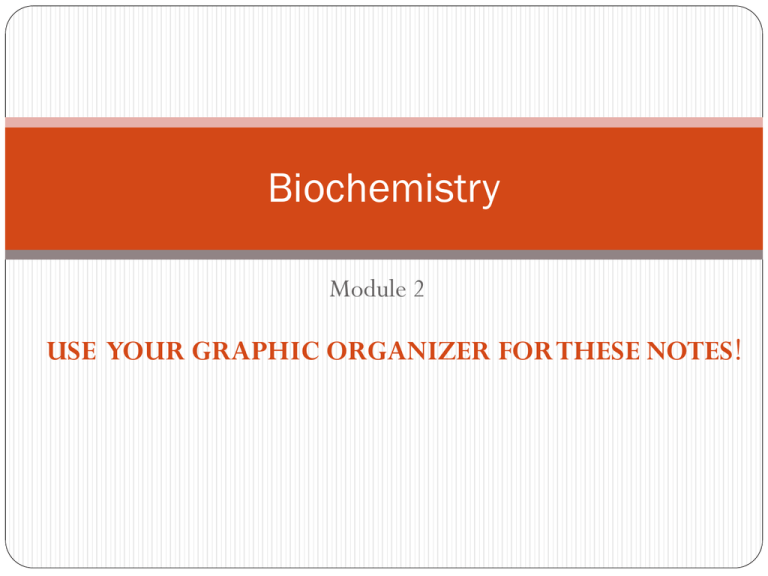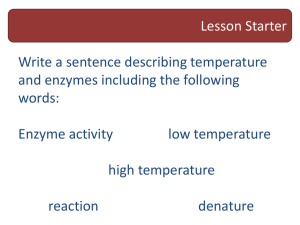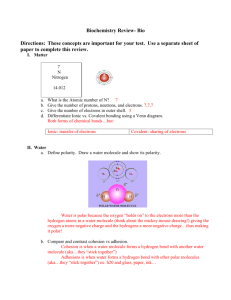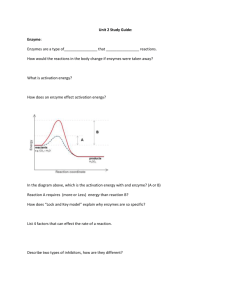Module 2 - graphic organizer notes
advertisement

Biochemistry Module 2 USE YOUR GRAPHIC ORGANIZER FOR THESE NOTES! Inorganic vs. Organic There are 6 essential elements for living things: Carbon, Hydrogen, Nitrogen, Oxygen, Phosphorus, and Sulfur (CHNOPS) Elements combine to make molecules. Molecules are either inorganic or organic: Inorganic – do not contain the element carbon Ex. H2O, NaCl, H2SO4 Organic – contain the element carbon Ex. C6H12O6, CH4 Acids and Bases Inorganic Compounds contain acids and bases: Measured on a pH scale Acids Neutral Bases 1 7 What IS an acid or a base? Acid – Hydrogen DONOR Base – Hydrogen ACCEPTOR H+ H+ H+ OHH+ OH- OH- H+ H+ OHOHH+ H+ OH- 14 H+ OHOHH+ OH- Buffers Living things regulate their internal environment to maintain homeostasis – a constant internal environment Living things have buffers in their cells to help regulate pH Buffers either DONATE or ACCEPT hydrogen ions Buffers help to maintain homeostasis by stabilizing pH Too much Hydrogen? Buffers ACCEPT – make less acidic Too little Hydrogen? Buffers DONATE – make more acidic Organic Compounds – The Core 4 Carbohydrates Elements C, H,O Monomer / Monosaccharide Subunit Function Short term energy YouTube - Gummy Bear, Structural material Examples Sugar, Starch, Cellulose, Glycogen Carbohydrates Organic Compounds – The Core 4 Lipids Elements C, H,O Monomer / Glycerol and fatty acids Subunit Function Long term energy, insulation, component of cell membrane Examples Fats, oils, waxes Lipids Organic Compounds – The Core 4 Nucleic Acids Elements C, H,O, N, P Monomer / Nucleotide Subunit Function Controls all cellular activities Examples DNA, RNA Nucleic Acids Organic Compounds – The Core 4 Proteins Elements C, H,O, N, P, S Monomer / Amino Acid Subunit Function Basic building material for life Examples Hormones, antibodies, pigments, enzymes Proteins Enzymes: A special type of protein Enzymes are biological catalysts that speed up chemical reactions in cells of living things. Enzymes do this by lowering the activation energy needed for the reaction to occur. Enzyme Mediated Pathway Enzymes may put substances together (synthesis) OR may break them apart (decomposition) Substrate Enzyme Products Enzyme – Substrate complex Enzyme Function Enzymes fit with their substrates like a lock and key If an enzyme loses its shape, it will not fit! An enzyme losing its shape is called denaturing. Characteristics of Enzymes Enzymes are: Specific – one enzyme, one substrate Reusable – not used up in a reaction








